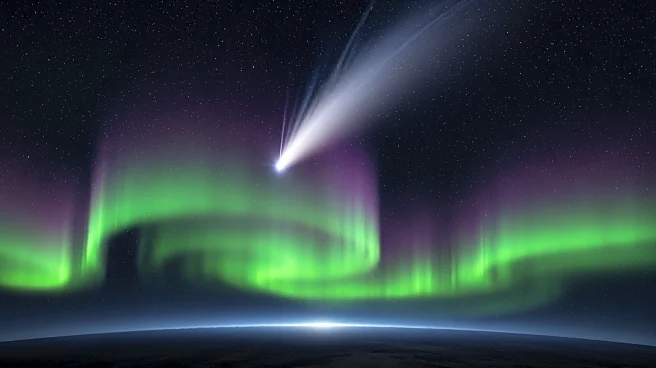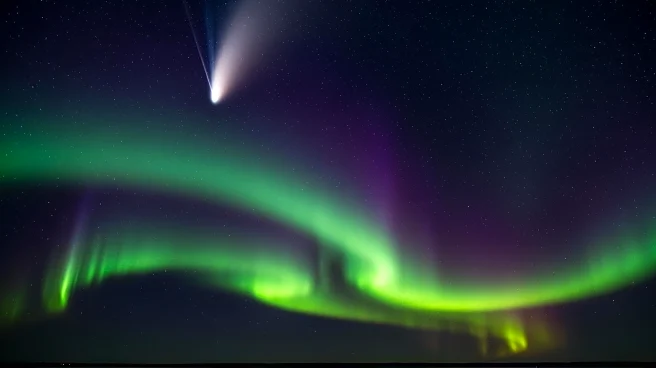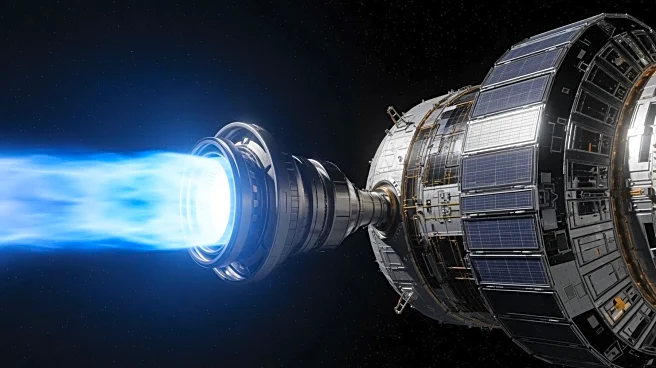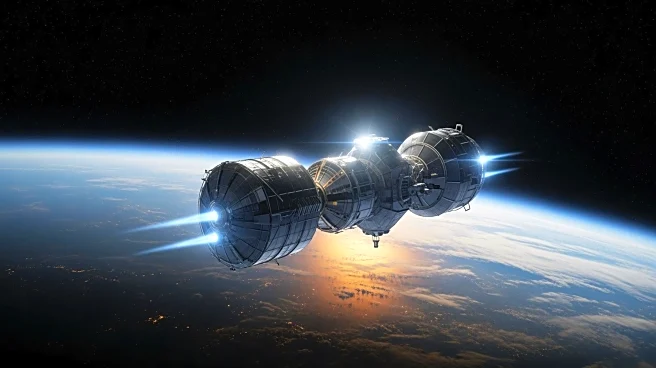What's Happening?
Astronauts aboard the International Space Station (ISS) have captured a remarkable image of comet Lemmon appearing to be absorbed by auroras in Earth's orbit. The sun's recent eruptions, the largest of 2025,
have triggered auroras visible as far south as Mexico. Comet Lemmon, officially designated C/2012 F6, is a long-period comet discovered in 2012 by the Mount Lemmon Survey in Arizona. Originating from the Oort Cloud, it releases gas and dust as it approaches the sun, forming a glowing tail. The image was taken in low Earth orbit, showcasing the comet's white tail juxtaposed against the auroras.
Why It's Important?
The sighting of comet Lemmon against auroras is a rare astronomical event, highlighting the dynamic and interconnected nature of our solar system. Such occurrences provide valuable opportunities for scientific observation and public engagement with space phenomena. The event underscores the importance of the ISS in capturing and studying celestial events, contributing to our understanding of space weather and its effects on Earth. The visibility of auroras reaching southern latitudes also indicates significant solar activity, which can impact satellite operations and communication systems.
What's Next?
Continued monitoring of solar activity and its effects on Earth will be crucial, especially for satellite operators and communication networks. The ISS will likely continue to capture and study similar events, contributing to scientific research and public interest in space exploration. As comet Lemmon continues its orbit, astronomers may track its path and study its composition, providing insights into the Oort Cloud and the behavior of long-period comets.
Beyond the Headlines
The juxtaposition of comet Lemmon with auroras offers a unique perspective on the interaction between solar activity and celestial bodies. This event may inspire further research into the effects of solar eruptions on cometary behavior and the potential for auroras to influence the visibility of other astronomical phenomena. Additionally, the image serves as a reminder of the interconnectedness of space weather and its potential impacts on Earth, emphasizing the need for continued investment in space observation and research.












